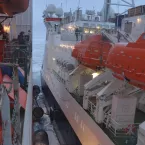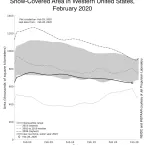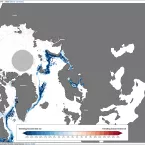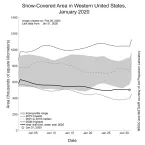Our Research
As climate changes, how do Earth's frozen areas affect our planet and impact society?
In this section
Related News & Stories
Filter by:

Feature Story
An advisee of National Snow and Ice Data Center (NSIDC) scientist Julienne Stroeve, Sean Horvath, a PhD candidate at the University of Colorado Boulder was one of twenty students chosen from six countries to take part in the Multidisciplinary drifting Observatory for the Study of Arctic Climate (MOSAiC) School. This is his experience.

Snow Analysis
February continued to see a trend of below average snow cover across the Western United States. Late January and early February storms replenished snow cover in some areas, but drought continues to impact California.

Feature Story
A new visualization tool, the Sea Ice Analysis Tool, has just been added to the NSIDC Arctic Sea Ice News & Analysis (ASINA) website that helps users customize the satellite data further, creating graphs or maps that show changes based on their chosen criteria.

Snow Analysis
Introducing Snow Today, a scientific analysis website that provides a snapshot and interpretation of snow conditions in near-real time across the Western United States, told with a unique combination of satellite data and surface observations.

Feature Story
Seven engineering students from the University of Colorado (CU) Boulder spent a year working as part of the Thwaites-Amundsen Regional Survey and Network (TARSAN) project team for the International Thwaites Glacier Collaboration (ITGC).

Feature Story
With the support of National Snow and Ice Data Center (NSIDC) sea ice concentration data, a team of researchers tries to catch another glimpse of an under-ice phytoplankton bloom that fuels the Arctic food web. The team aims to understand the survival mechanisms at play in this dark, harsh place.